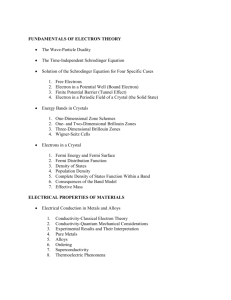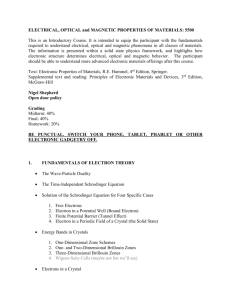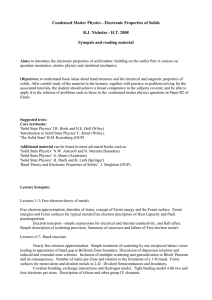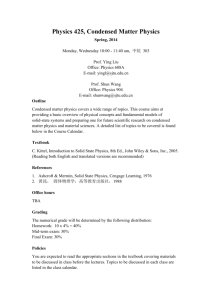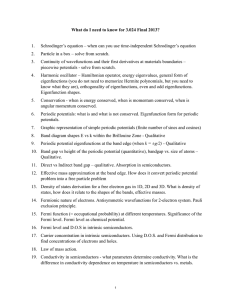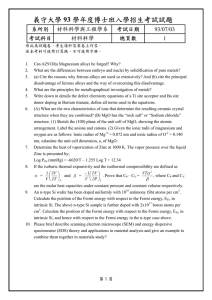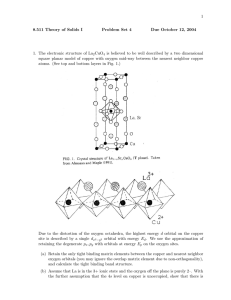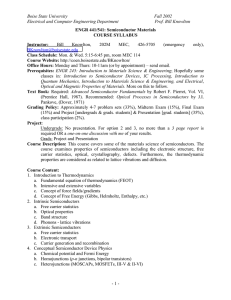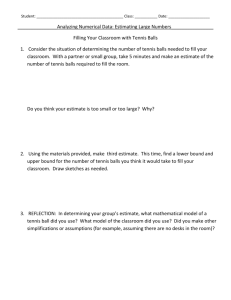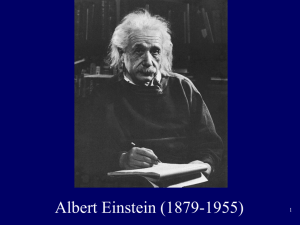MTSE 3070
advertisement
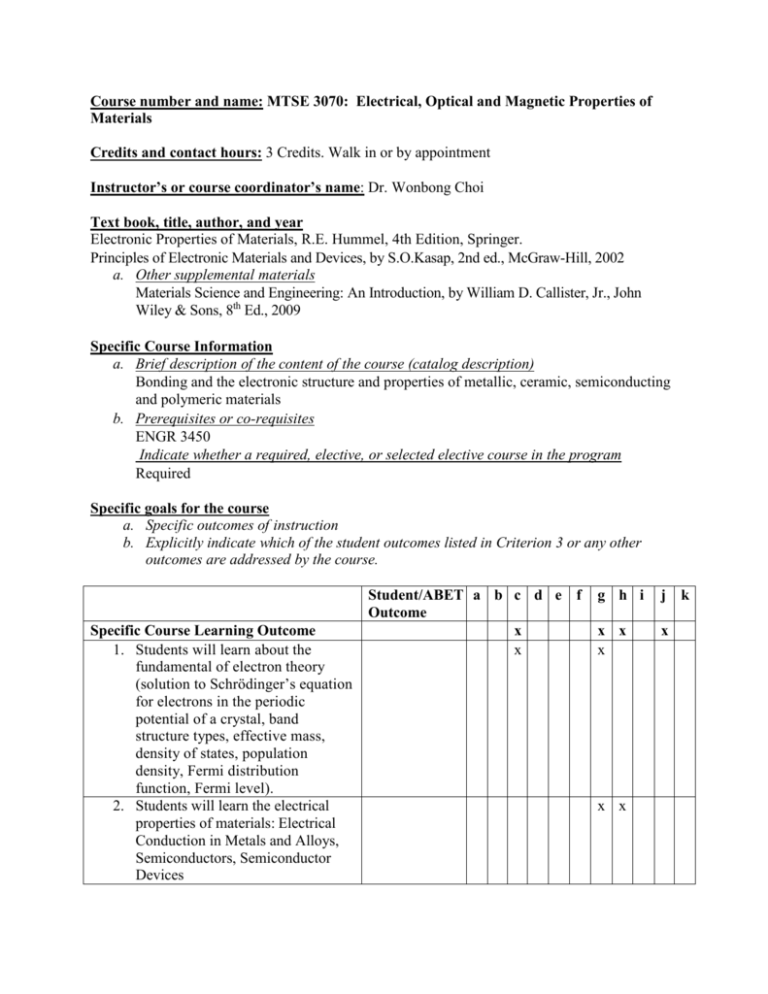
Course number and name: MTSE 3070: Electrical, Optical and Magnetic Properties of Materials Credits and contact hours: 3 Credits. Walk in or by appointment Instructor’s or course coordinator’s name: Dr. Wonbong Choi Text book, title, author, and year Electronic Properties of Materials, R.E. Hummel, 4th Edition, Springer. Principles of Electronic Materials and Devices, by S.O.Kasap, 2nd ed., McGraw-Hill, 2002 a. Other supplemental materials Materials Science and Engineering: An Introduction, by William D. Callister, Jr., John Wiley & Sons, 8th Ed., 2009 Specific Course Information a. Brief description of the content of the course (catalog description) Bonding and the electronic structure and properties of metallic, ceramic, semiconducting and polymeric materials b. Prerequisites or co-requisites ENGR 3450 Indicate whether a required, elective, or selected elective course in the program Required Specific goals for the course a. Specific outcomes of instruction b. Explicitly indicate which of the student outcomes listed in Criterion 3 or any other outcomes are addressed by the course. Specific Course Learning Outcome 1. Students will learn about the fundamental of electron theory (solution to Schrödinger’s equation for electrons in the periodic potential of a crystal, band structure types, effective mass, density of states, population density, Fermi distribution function, Fermi level). 2. Students will learn the electrical properties of materials: Electrical Conduction in Metals and Alloys, Semiconductors, Semiconductor Devices Student/ABET a b c d e f Outcome x x g h i j k x x x x x x 3. Students will learn the relationships between electronic structure and magnetic properties. 4. Students will learn the relationships between electronic structure and optical properties. x x Brief list of topics to be covered I. Fundamentals of Electron Theory Energy Bands in Crystals, Electrons in a Crystal, Fermi Energy and Fermi Surface, Fermi Distribution Function, Density of States , Population Density, Complete Density of States Function Within a Band, Consequences of the Band Model, Effective Mass II. Electrical Properties of Materials Electrical Conduction in Metals and Alloys Conductivity-Classical Electron Theory, Conductivity-Quantum Mechanical Considerations, Experimental Results and Their Interpretation, Pure Metals, Alloys, Ordering, Superconductivity, Thermoelectric Phenomena Semiconductors Band Structure, Intrinsic Semiconductors, Extrinsic Semiconductors Donors and Acceptors, Temperature Dependence of the Number of Carriers Conductivity, Fermi Energy, Effective Mass, Hall Effect, Rectifying Contacts (Schottky Barrier Contacts), Ohmic Contacts (Metallizations), p-n Rectifier (Diode) Cell (Photodiode), Transistors: MOSFETs Electrical Properties of Polymers, Ceramics, Dielectrics III. Magnetic Properties of Materials Basic Concepts in Magnetism, Diamagnetism, Paramagnetism, Ferromagnetism Antiferromagnetism, Ferrimagnetism, Langevin Theory of Diamagnetism Quantum Mechanical Considerations: Paramagnetism, Diamagnetism, Ferromagnetism and Antiferromagnetism IV. Optical Properties of Materials The optical constants, Atomistic Theory of the Optical Properties, Optoelectronic Applications, Carbon Dioxide Laser, Semiconductor Laser, Direct-Versus Indirect-Band Gap Semiconductor Lasers, Wavelength of Emitted Light, Threshold Current Density Light-Emitting Diodes (LEDs), Integrated Optoelectronics
